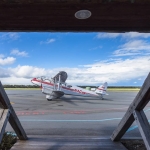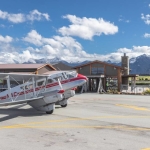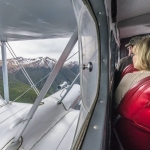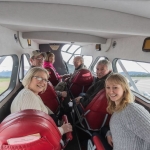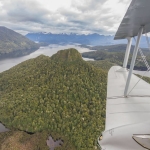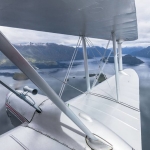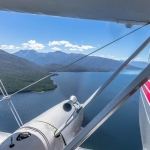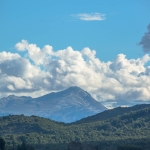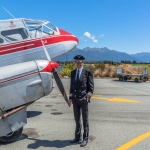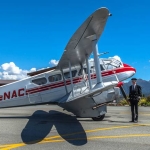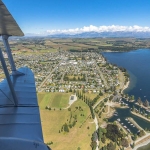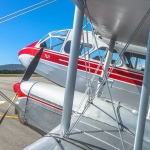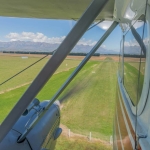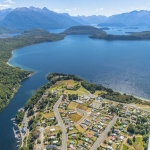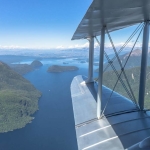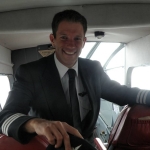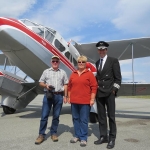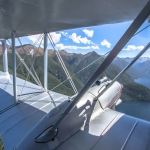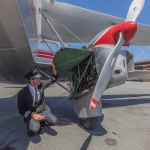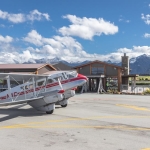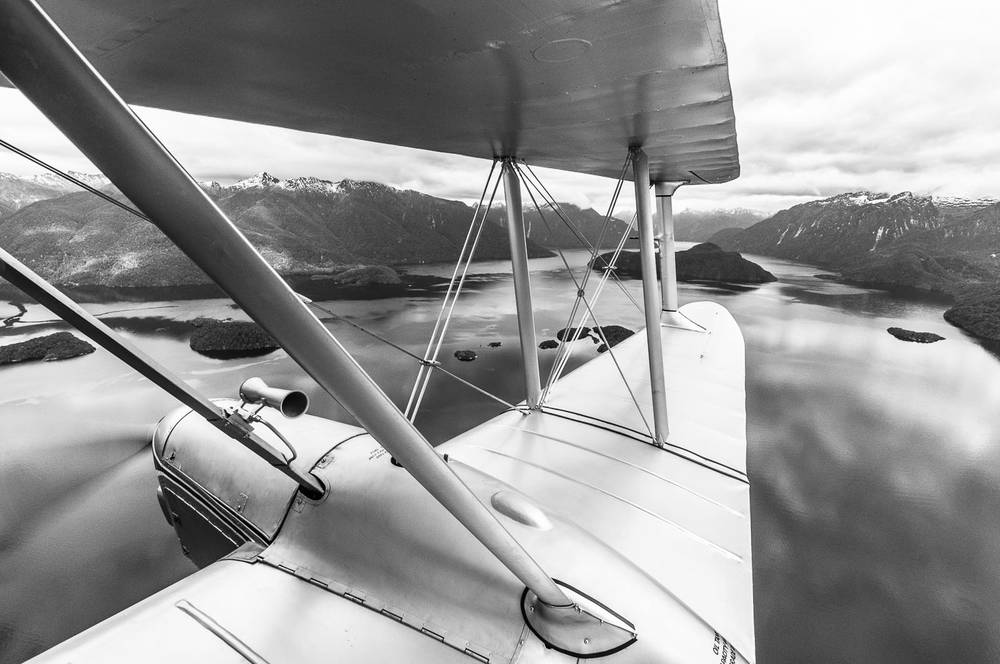About the DC3
The Douglas DC-3 is an American fixed-wing propeller-driven aircraft whose speed and range revolutionized air transport in the 1930s and 1940s. Its lasting impact on the airline industry and World War II makes it one of the most significant transport aircraft ever made. Many DC-3s are still used in all parts of the world.
Design and development
The DC-3 was the culmination of a development effort that originated out of an inquiry from Transcontinental and Western Airlines (TWA) to Donald Douglas. TWA’s rival in transcontinental air service, United Airlines, was inaugurating service with the Boeing 247 and Boeing refused to sell any 247s to other airlines until United’s order for 60 aircraft had been filled.[2] TWA asked Douglas to design and build an aircraft that would enable TWA to compete with United. Douglas’ resulting design, the 1933 DC-1, was promising, and led to the DC-2 in 1934. While the DC-2 was a success, there was still room for improvement.
The DC-3 was the result of a marathon telephone call from American Airlines CEO C. R. Smith to Donald Douglas, during which Smith persuaded a reluctant Douglas to design a sleeper aircraft based on the DC-2 to replace American’s Curtiss Condor II biplanes. Douglas only agreed to go ahead with development after Smith informed him of American’s intention to purchase twenty aircraft. The new aircraft was engineered by a team led by chief engineer Arthur E. Raymond over the next two years, and the prototype DST (for Douglas Sleeper Transport) first flew on December 17, 1935 (the 32nd anniversary of the Wright Brothers’ flight at Kitty Hawk, North Carolina). A version with 21 passenger seats instead of the sleeping berths of the DST was also designed and given the designation DC-3. There was no prototype DC-3, the first DC-3 built followed seven DSTs off the production line and was delivered to American.
of a marathon telephone call from American Airlines CEO C. R. Smith to Donald Douglas, during which Smith persuaded a reluctant Douglas to design a sleeper aircraft based on the DC-2 to replace American’s Curtiss Condor II biplanes. Douglas only agreed to go ahead with development after Smith informed him of American’s intention to purchase twenty aircraft. The new aircraft was engineered by a team led by chief engineer Arthur E. Raymond over the next two years, and the prototype DST (for Douglas Sleeper Transport) first flew on December 17, 1935 (the 32nd anniversary of the Wright Brothers’ flight at Kitty Hawk, North Carolina). A version with 21 passenger seats instead of the sleeping berths of the DST was also designed and given the designation DC-3. There was no prototype DC-3, the first DC-3 built followed seven DSTs off the production line and was delivered to American.
A Douglas DC-3 (a former military C-47B) of Air Atlantique taking off at Hullavington airfield, England.The amenities of the DC-3 and DST popularized air travel in the United States. With only three refueling stops, eastbound transcontinental flights crossing the U.S. in approximately 15 hours became possible. Westbound trips took 17-1/2 hours due to prevailing headwinds — still a significant improvement over the competing Boeing 247. During an earlier era, such a trip would entail short hops in slower and shorter-range aircraft during the day, coupled with train travel overnight.
Production
Total production of the DC-3 was 16,079.More than 400 remained in commercial service in 1998. Production of DC-3s ceased in 1942, military versions were produced until the end of the war in 1945. In 1949, a larger, more powerful Super DC-3 was launched to positive reviews; however, the civilian market was flooded with second-hand C-47s, many of which were converted to passenger and cargo versions of DC-3s, and only three were built and delivered the following year. The prototype Super DC-3 served the US Navy with the designation YC-129 alongside 100 C-47s that had been upgraded to the Super DC-3 specification.
The oldest DC-3 still flying is the original American Airlines Flagship Detroit (c/n 1920, #43 off the Santa Monica production line), which can be seen at airshows around the United States and is owned and operated by the nonprofit Flagship Detroit Foundation.
Source: Wikipedia

